 |
Famous Hungarians
Listing famous Hungarians is an enormous
job, since there is no end of talent from the best in Hungary.
Hungarians come from all walks of life and from all faiths. From
engineering, medicine, literature, arts, music and business; Hungarians
have improved the lives of their countrymen and the world. I have
listed famous Hungarians, men and women that fall in this category. If
you have other Hungarians you would like to list, please contact us. Listed
in alphabetical order are the following. Please click on any of the
names for more information.

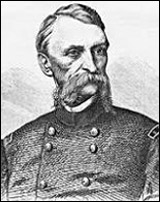 |
Alexander Asbóth
(Dec 18, 1810 – January 21, 1868). Alexander had many accomplishments.
He was a colonel in the Hungarian Freedom fight of 1848-49, a marshal
in the American Civil War and a US ambassador to Uruguay and
Ar-gentina. As a civil engineer, Alexander prepared the city plan for
Manhattan and designed Central Park.
|
 |
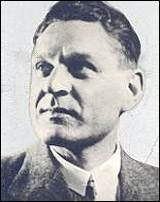 |
Oszkár Asbóth
(March 31, 1881 – February 27, 1960) Aviation engineer often credited
with the invention of the helicopter. He was a student of Tódor von
Kármán, the Father of Supersonic Flight. In 1917, during World War I,
Oszkár Asbóth, Tódor von Kármán, István Petróczy and Vilmos Zurovetz
worked together on designing the helicopter. After many years of
experimentation following the war, he built the Asbóth-helicopter. On
September 9, 1928, witnessed by many foreign experts, his model AH 1
helicopter ascended from a standing position vertically to a great
height for the first time in the world. Liptrot from the British Air
Ministry, who travelled on the helicopter, wrote in a Journal of the
Aeronautical Society in 1931: the Asboth-helicopter ascends vertically
with a remarkable speed ... to any height where it can to float in air
stationary for some time. It can be perfectly navigated and absolutely
stable around all axes...
|
 |
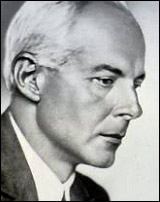 |
Béla Bartók (March
25, 1881 – September 26, 1945) was a Hungarian composer, pianist, music
educator and member of the Hungarian Academy. After 1940, he lived in
New York. He is considered one of the most important composers of the
20th century and is regarded, along with Liszt, as Hungary's greatest
composer. Through his collection and analytical study of folk music, he
was one of the founders of ethnomusicology.
|
 |
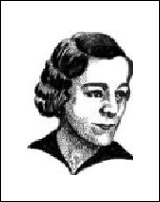 |
Madeleine Forró Barnóthy
(August 21, 1904 – March 1993). Astrophysicist, and pioneer in the
study of Cosmic Radiation, Bio-Magnetism and Magnetic Therapy. First
Woman to earn a doctorate in physics in Hungary! Barnothy studied in
Budapest and Göttingen, Germany. From 1928 to 1948 Madeleine was a
physics professor at the Budapest University. In 1948 she settled in
the USA with Jenö Barnóthy, her husband and fellow scientist. Barnothy
specialized in cosmic radiation, astro and nuclear physics and
biomagnetism. She was the author of over 150 scientific papers and
editor of the two-volume book Biological Effects of Magnetic Fields
(1964). Already in 1964 Dr. Madeleine F. Barnóthy predicted that the
magnetic field will in due time develop into a powerful new analytic
and therapeutic tool of medicine. She was a member of numerous American
and international scientific associations. Forró Barnóthy was a pioneer
in the research of the phenomena of cosmic radiation, a prerequisite
for conquering the universe.
|
 |
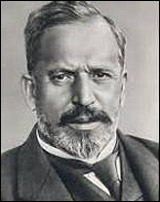 |
Donát Bánki (June
6, 1859 – August 1, 1922). He was a Hungarian mechanical engineer and
co-inventor of the carburetor and the Bánki-Csonka engine. Until 1893,
there had been many problems with the ignition of petrol engines due to
uneven mixing of gases. Most devices of the time could not produce the
precise mixing proportions. The carburetor invented by Bánki and Csonka
immediately eliminated these problems. Bánki and Csonka suggested that
the fuel should be atomized into small particles and mixed with air in
the right proportion before feeding it into the engine. This was the
first carburetor in the world and ever since billions of engines, cars,
powerboats, motorcycles and aircraft have used carburetors designed
according to Bánki's and Csonka's theory.
|
 |
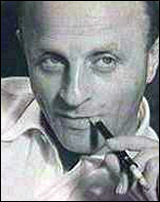 |
László Bíró
(September 29, 1899 – November 24, 1985) was an Inventor of the modern
ballpoint pen. József László Bíró was born in Budapest and died in
Buenos Aires, Argentina. He first studied medicine, but between 1921
and 1938, László was a journalist, sculptor, painter, art critic, stock
broker, hypnotizer, race-car driver, car salesman and of course an
inventor. Biró's most famous invention was the ballpoint pen. By 1938,
he had patented it in over 100 countries. Finally in 1948 the Parker
Company bought his patent. In the USA it became known as the BIRó PEN.
His other important invention was the automatic gear shift In 1932, he
traveled with his engineer friend Rigó from Budapest to Berlin (more
than 1000 km = 625 mi) on a motorcycle with a sealed gear shift.
General Motors bought his patent, just so the competition wouldn't be
able to buy it.
|
 |
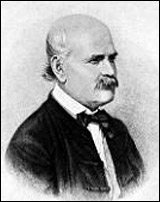 |
Ignác Fülöp Semmelweis
(July 1, 1818 – August 13, 1865). He was a physician, called by many in
the field of medicine as “the savior of mothers.” Discovered the cause
of puerperal (childbed) fever and introduced antisepsis into medical
practice. Semmelweis discovered that the incidence of puerperal fever
could be drastically cut by the use of hand disinfection in obstetrical
clinics. Puerperal fever was common in mid-19th-century hospitals and
often fatal, with mortality at 10%–35%. Under these procedures, the
mortality rates in the first division dropped from 18.27 to 1.27
percent, and in March and August of 1848 no woman died in childbirth in
his division. Some doctors were offended at the suggestion that they
should wash their hands and Semmelweis could offer no acceptable
scientific explanation for his findings. Semmelweis's practice earned
widespread acceptance only years after his death, when Louis Pasteur
confirmed the germ theory.
|
 |
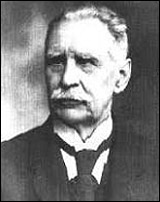 |
János Csonka
(January 22, 1852 – October 27, 1939). The Szeged-born inventor was one
of the most prominent figures in the history of Hungarian technology.
Self-taught in many areas, he spoke Latin, German and French well. He
went to Paris in 1874, where he studied the Lenoir-motor. Csonka
constructed the first Hungarian gas motor in 1879 with tools and
equipment devised by himself. In 1882 he built the blended fuel gas and
petroleum motor as well He was the co-inventor of the carburetor with
Donát Bánki, patented on February 13, 1893.
|
 |
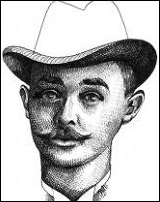 |
József Dallos
(January 7, 1905 – June 27, 1979) was a physician who invented the
"Living Eye Impression Method" and developed the First Practical
Contact Lenses. Dallos developed a molding technique using Negocol and
Hominite - the first method to be used on the living eye to produce a
successful contact lens. Dallos invented a glass-molding technique that
allowed the lens to take on the characteristics of the sclerotic
membrane. He made a copy of the eye’s top layer using a thin
copperplate and molded the molten glass over its surface. In 1973,
Dallos immigrated to London where he earned worldwide acclaim. George
Nissel in London, Dallos’ brother-in-law, produced high quality lenses
and Nissel laboratories still exists in England. Dallos was a real
pioneer in scleral lenses and was one of the first to recognize and
discuss internal or lenticular astigmatism.
|
 |
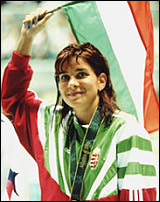 |
Krisztina Egerszegi
(Aug. 16, 1974 - ) 5-time Olympic Gold Medalist: "Greatest Backstroke
Swimmer of All Times. She is the Youngest Olympic Champion and only
woman to win five gold medals in individual swimming events. Egerszegi
was only 14 years old when she competed at the 1988 Seoul Olympics. In
1992, Egerszegi, by now a seasoned 18-year-old, won both backstroke
events. She also entered and won the 400m individual medley, recording
the fastest time since Petra Schneider's chemically augmented 1982
world record. At the 1996 Atlanta Games, Egerszegi earned a bronze
medal in the 400 m and then won the 200m backstroke to become only the
second swimmer in history to win the same event three times. In 1996,
Egerszegi did not enter the 100m backstroke; however her leadoff
backstroke time in the medley relay, 1:01.15, was faster than the
winning time in the 100m backstroke final.
|
 |
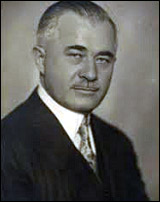 |
József Galamb
(February 3, 1881 – December 4, 1955) was an engineer, born in Makó
Hungary and died in Detroit, Michigan. József was an employee of the
Ford Company who designed the famous Model-T car. He invented the
planetary gearbox and the electrical ignition system (spark plug). At
the same time, József designed the process for mass production of cars.
The small Ford Company became a huge factory. In 19 years, they made 15
˝ million Model-T cars. József Galamb also designed the Model-A car and
the Fordson tractor.
|
 |
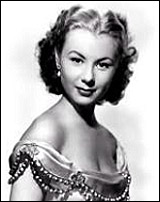 |
Mitzi Gaynor
(September 4, 1931) Legendary Actress / Singer / Dancer: Star of "South
Pacific". Mitzi Gaynor has claimed to be descended from Hungarian
nobility. The daughter of a ballerina, Gaynor made her own
terpsichorean debut when she was barely a toddler; by age 12, she had
joined the dancing chorus of the Los Angeles Civic Light Opera. In
1950, Gaynor was signed by 20th Century Fox as yet another potential
Betty Grable replacement. She sang and danced her way quite prettily
through such Technicolor confections as Golden Girl (1951, as Lotta
Crabtree), Bloodhounds of Broadway (1952), and There's No Business like
Show Business (1954). Mitzi Gaynor continued to be a major draw through
the 80's on the nightclub and summer-musical circuit.
|
 |
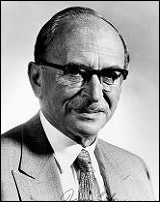 |
Dennis Gábor (June
5, 1900 – February 8, 1979). He was a Hungarian-British electrical
engineer and inventor, awarded the Noble Prize in Physics in 1971 for
his invention of holography. The father of the hologram was raised in
Hungary and attended university in Germany and the United Kingdom. On
January 1949, Dennis joined the Imperial College of Science &
Technology in London, first as Reader in Electronics, and later as
Professor of Applied Electron Physics. Dennis retired in 1967.
|
 |
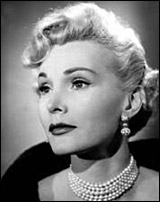 |
Zsa Zsa Gábor
(February 6, 1917 - ). She is a Hungarian-born American stage, film and
television actress. She acted on stage in Vienna, Austria, in 1932, and
was crowned Miss Hungary in 1936. She immigrated to the United States
in 1941 and became a sought-after actress with "European flair and
style", with a personality that "exuded charm and grace". Her first
movie role was as supporting actress in Lovely to Look At. She later
acted in We're Not Married! And played one of her few leading roles in
Moulin Rouge (1952), directed by John Huston, who described her as a
"creditable" actress. Besides her film and television appearances, she
is best known for having nine husbands, including hotel magnate Conrad
Hilton.
|
 |
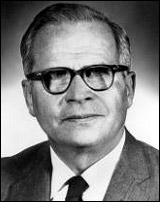 |
Peter Carl Goldmark
(December 6, 1906 – December 7, 1977) Engineer and CBS Chief Scientist
- Invented the Color Television, 33 1/3 LP Record, and the Electronic
Video Recorder. Dr. Goldmark, responsible for over 160 inventions in
his storied career, studied at the University of Vienna and from
1931–33 worked for a radio company in England. After immigrating to the
United States in 1933, he worked as a construction engineer until
joining the Columbia Broadcasting System (CBS) in 1936. There he
developed the first commercial color television system, which used a
rotating three-color disk, and announced in 1940 that CBS had a
marketable color television and broadcasted in New York. Later,
Goldmark would achieve fame for the first electronic video recording
system—the forerunner for the VCR in your home today. He became the
chief engineer and President of CBS’s Laboratory in 1954. He also
developed a scanning system used by the Lunar Orbiter spacecraft in
1966 to transmit photographs to earth from the moon.
|
 |
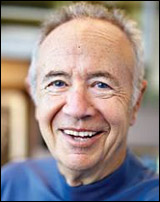 |
Andrew Grove
(September 2, 1936 - ). He is a former president/CEO, Chairman of
Intel, businessman, engineer, author and a pioneer in the semiconductor
industry. Time’s Man of the Year of 1998. At the age of 20, Andy moved
to the US from Hungary, where he finished his education. Within five
years of graduation, he became CEO of Intel and was a pioneering figure
in transforming the company into a giant. In July 1968, Dr. Grove
participated in the founding of Intel Corporation. In 1979 he was named
Chairman and CEO, and in May 1998 he relinquished his CEO title and
remains Chairman of the Board. Dr. Grove has patented several
semiconductor technologies and is the author of the book: “Only the
Paranoid Survive.”
|
 |
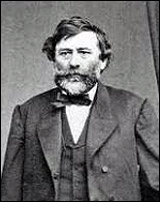 |
Ágoston Haraszty
(August 30, 1812 – July 6, 1869). He was a Hungarian aristocrat and
founder of the American grape culture. ágoston is regarded by many as
the true Father of California wines. In 1861, he imported over 100,000
grape vines to California in 1,400 varieties. Among his accomplishments
was the introduction of the Zinfandel, Muscat and Tokaj grapes. In
1862, ágoston published a book entitled: Grape Culture, Wines and Wine
Making. ágoston also invented an efficient gold refining process.
|
 |
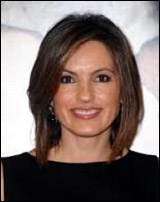 |
Mariska Hargitay
(January 23, 1964 - ). She is actress and a talented daughter of Jayne
Mansfeild and Hungarian actor Mickey (Miklós) Hargitay. Now starring in
"Law and Order: Special Victims Unit." Hargitay is also known to
millions of viewers from her recurring role on ER as Dr. Greene's
(Anthony Edwards) girlfriend Cynthia Hooper in the 1997-98 season of
the top-rated show. She also gained notice as a cast regular in the
sitcom: Can't Hurry Love, guest roles on NBC's Seinfeld, Ellen, Thirty
something, Wiseguy, and In the Heat of the Night Hargitay was also seen
in the made-for-television movies.
|
 |
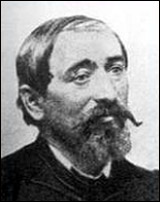 |
János Irinyi (May
18, 1817 – December 17, 1895) was a chemist and inventor of the
noiseless and non-explosive match. He acquired his chemical knowledge
at the Vienna Polytechnic. During one of his professor's experiments,
he solved the puzzle of making silent matches. After long hours of
experimentation he patented his invention of silent and non-explosive
matches in 1836. In the heads of the matches he mixed phosphor with
lead dioxide instead of calcium chlorate. Irinyi sold his invention to
a manufacturer of matches and went for a study tour abroad. He was one
of the most talented Hungarian chemists. He completely acquired the
knowledge of the new chemistry developed in the spirit of A.L.
Lavoisier. He contributed significantly to the development of the
Hungarian professional terminology in chemistry.
|
 |
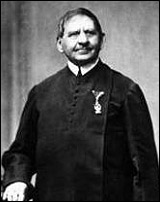 |
Ányos Jedlik
(January 11, 1800 – December 13, 1895). He was an inventor, engineer,
physicist, and Benedictine priest. ányos was also a member of the
Hungarian Academy of Sciences, and author of several books. He is
considered by Hungarians and Slovaks to be the unsung father of the
dynamo and the electric motor. In 1827, Jedlik started experimenting
with electromagnetic rotating devices which he called
lightning-magnetic self-rotor and in 1828 demonstrated the first
device. In 1829 he constructed the first rotating machine based on the
electromagnetic impulse, which was the predecessor of the DC motor. He
lectured at Benedictine schools up to 1839, then for 40 years at the
Budapest University of Sciences department of physics-mechanics. He
constructed a "single-pole electric starter", which exploited the
principle of self-ignition. His machine was a unipolar generator with
no brushes. With the single pole electric starter, he formulated the
concept of the dynamo at least 6 years prior to Siemens and Wheatstone.
|
 |
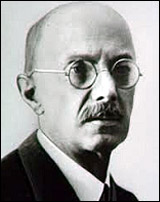 |
Kálmán Kandó (July
10, 1869 – January 13, 1931) was a Hungarian engineer and a pioneer in
the development of electric railway traction. He is the Father of
Modern Electric Trains! In 1894, Kálmán Kandó developed high-voltage
three phase alternating current motors and generators for electric
locomotives. His work on railway electrification was done at the Ganz
electric works in Budapest. He was the first who recognized that an
electric train system can only be successful if it can use the
electricity from public networks.
|
 |
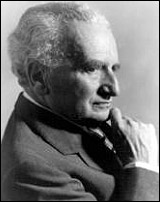 |
Tódor (Theodore) von Kármán
- (May 11, 1881 – May 7, 1963) Aerospace engineer and physicist. He is
responsible for many key advances in aerodynamics, notably his work on
supersonic and hypersonic airflow characterization. Also is the Father
of the Supersonic Flight, and the founder of the aeronautical and the
astronautically sciences. Developed first helicopter tethered to the
ground that was able to maintain hovering flight. He was one of the
creators of scientific fluid mechanics. He designed the first rocket to
reach interstellar space.
|
 |
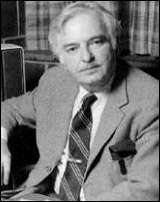 |
John Kemény (May
31, 1926 – December 26, 1992) was a computer scientist, Mathematician,
co-inventor of BASIC, Einstein's mathematical assistant, President of
Dartmouth College and "Father of Micro computing." During his
undergraduate days, he also worked on the Manhattan Project (the A
bomb) in Los Alamos, NM. Dr. Kemény developed Beginner’s All-Purpose
Symbolic Instruction Code (BASIC) in 1964, along with Thomas Kurtz. In
the 1980s, they developed True BASIC, a more powerful version of BASIC
that met ANSI and ISO standards.
|
 |
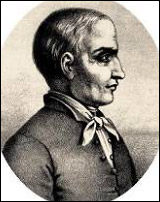 |
Sándor Kőrösi Csoma
(March 27, 1784 – April 11, 1842) was a linguist and ex-plorer. Studied
oriental languages in Göttingen, Germany and set out on foot to Asia,
to find the ancient homeland and origins of the Hungarians. During his
travels starting in 1819, he reached India through Iran and
Afghanistan. He spoke 20 languages and compiled a glossary of 16
European and Oriental languages. Suffering unimaginable privations, he
lived and studied in lama monasteries and laid down the foundations of
the Tibetan language. He emerged with the world's first Tibetan
dictionary (containing 40,000 words) and grammar book which were
published in an English edition in 1843. Tragically, on his fourth
journey to Tibet, having at last obtained some information about the
Yougar people (a race possibly related to the Magyars), he was fatally
struck with malaria and died in Darjeeling.
|
 |
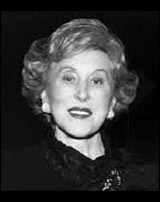 |
Estée Lauder -
(July 1, 1908 – April 24, 2004). Cosmetic Queen! She was a founder of
Estee Lauder Companies Inc. This company employs some 10,000 people
around the world. As a business woman, Estée controls 45 percent of the
cosmetics market in US department stores under well recognized brand
names: Estee Lauder, Aramis, Clinique, Prescriptives, Origins, M.A.C.,
and Bobbi Brown essentials, Tommy Hilfiger, Jane, Donna Karan
Cosmetics, Aveda, Stila, Jo Malone and Kate Spade! Estée Lauder was
born Josephine Esther Mentzer in Queens, New York, to Max and Rose
(Schotz Rosenthal). She is a Hungarian immigrant with a French Catholic
mother and Jewish father. She grew up in the Corona section of Queens,
New Jersey. After 20 years of slow hard work in the cosmetics industry,
Estée started her career by selling a face cream made by her Hungarian
uncle. Estée later brought out her own Youth Dew scented bath oil,
which was an enormous success in the 1950s and 1960s. Innovative, with
a talent for adapting, marketing and promotion, she built up an
estimated one billion dollar a year business.
|
 |
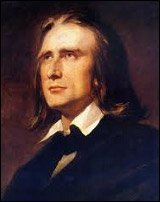 |
Franz Liszt
(October 22, 1811 - July 31, 1886). Franz was a renowned composer,
pianists, conductor, and teacher. He also established the Hungarian
Music Academy. Liszt became famous throughout Europe during the
nineteenth century and was remember for his virtuosic skill as a
pianist. He was said by his contemporaries to have been the most
technically advanced pianist of his age and perhaps the greatest
pianist of all time. Franz Liszt was the only contemporary whose music
Richard Wagner gratefully acknowledged as an influence upon his own.
His lasting fame was an alchemy of extraordinary digital ability -- the
greatest in the history of keyboard playing -- an unmatched instinct
for showmanship, and one of the most progressive musical imaginations
of his time. Hailed by some as a visionary, reviled by others as a
symbol of empty Romantic excess, Franz Liszt wrote his name across
music history in a truly inimitable manner.
|
 |
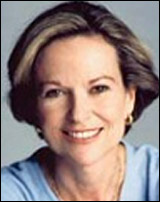 |
Kati Marton
(February 3, 1949 - ) is a Hungarian-American author and journalist.
Her career has included reporting for ABC News as a foreign
correspondent and National Public Radio, where she started as a
production assistant 1971 in her 20s, as well as print journalism and
writing a number of books. Marton is currently a director and formerly
chair of the Committee to Protect Journalists, an organization founded
to monitor abuses against the press and promote press freedom around
the world. She also serves on the board of directors of the
International Rescue Committee, Human Rights Watch’s Europe-Central
Asia Advisory Committee, the New America Foundation and the Central
European University. She is a member of the Council on Foreign
Relations, P.E.N. International and the Author’s Guild.
|
 |
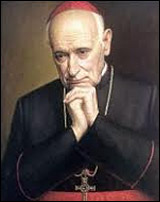 |
József Cardinal Mindszenty
(March 29, 1892 — May 6, 1975). The highest Catholic official in
Hungary convicted of treason and sentenced to life imprisonment by the
Communist People's Court. He was a Cardinal and the head of the Roman
Catholic Church as the Archbishop of Esztergom in Hungary. He became
known as a steadfast supporter of Church freedom and opponent of
communism and the brutal Stalinist persecution in his country. As a
result, he was tortured and given a life sentence in a 1949 show trial
that generated worldwide condemnation, including a United Nations
resolution. Freed in the Hungarian Revolution of 1956, he was granted
political asylum and lived in the U.S. embassy in Budapest for 15
years. He was finally allowed to leave the country in 1971. He died in
exile in 1975 in Vienna, Austria.
|
 |
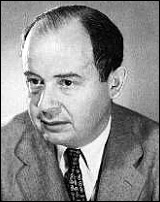 |
John von Neumann
(Dec 28, 1903 - Feb 8, 1957) was a legendary mathematician, physicist,
logician, and Computing Pioneer. He is the father of Binary Code and
the Stored Program Computer that are the keys for modern computer
programming, and game theory. Proposed Implosion and co-developed the
Atomic Bomb. He built a solid framework for quantum mechanics, and he
played a key role in the development of the U.S. ballistic missile
program. He is generally regarded as one of the greatest mathematicians
in modern history. Von Neumann was a pioneer of the application of
operator theory to quantum mechanics, in the development of functional
analysis, a principal member of the Manhattan Project and the Institute
for Advanced Study in Princeton. He was a key figure in the development
of game theory and the concepts of cellular automata, the universal
constructor, and the digital computer. Along with Teller and Stanislaw
Ulam, von Neumann worked out key steps in nuclear physics involved in
thermonuclear reactions and the hydrogen bomb.
|
 |
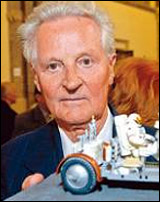 |
Ferenc Pavlics
(February 3, 1928 - ). He is a mechanical engineer and developer for
NASA's Apollo Lunar and Mars Rover programs. Frank initially worked as
a mechanical engineer and researcher at the Armored Vehicle Arsenal in
Detroit, Michigan and General Motors in California before working for
NASA. He developed for NASA the first vehicle in history that traveled
on extraterrestrial terrain; the moon rover, used on the Moon by the
Apollo 11 expedition in 1969. The rover, known as Newcomer, was
improved by NASA under Pavlics' direction, and landed on Mars in 1997
with the space probe named Trail finder.
|
 |
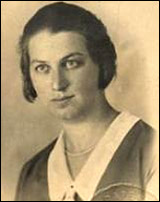 |
Eszter Pécsi (March
8, 1898 – May 4, 1975) Structural Engineer - designer of the first
reinforced-concrete skyscraper! She was a First woman who received a
degree in engineering in Hungary (1920). Eszter Pecsi prepared the
structural design for the indoor swimming pool on St. Margit Island
(Budapest, Hungary), and the first iron-framed tall building of
Budapest, the Hospital on Fiume út. In 1957 she fled Hungary and worked
in Vienna, Austria for a year where she designed the city's first
multi-level parking garage. From 1958 she lived and worked in New York.
She was the structural designer of the first reinforced-concrete
skyscraper (Hotel Americana) and two skyscrapers erected for the
professors of Columbia University. For these three works, Pécsi
received the year's best structural engineering design award from New
York City. She developed a special method to prepare the site of the
foundation for the skyscrapers along the Hudson River, for which she
was named the best structural engineer of the year.
|
 |
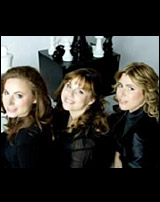 |
Zsuzsa (Susan), Judit
(Judith), and Zsófia (Sofia) Polgár. The sisters are Chess
Grand Masters and Olympic Gold Medalists. Judith has been called the
Greatest Female Player of all Time! By the early 1980s, the Polgar
chess factory had stepped up its output. Susan's two younger sisters,
Zsofia and Judit, were next on the genius assembly line and in a few
years the family would be ready to take the world of chess by storm. At
fifteen, Susan was already the top-ranked female player in the world.
At the 1985 New York Open, she caused a sensation by beating a grand
master for the first time. By 1989, twelve year old Judit had a winning
streak of eight competitions in a row and, at fourteen; Zsofia
annihilated four grand masters for one of the greatest tournament
results of all time. Susan is still a powerful presence at the
chessboard.
|
 |
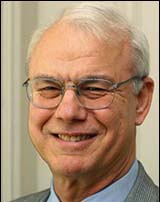 |
Miklos Porkolab
(March 24, 1939 - ), Professor and Director of Plasma Science and
Fusion Center at MIT (Massachusetts Institute of Technology) Department
of Physics. Researcher in controlled fusion research, radio frequency
heating of plasma, experimental studies of plasma turbulence, and basic
plasma physics, including magnetic reconnection. Born in Budapest, left
Hungary in 1956, shortly after the Hungarian uprising. Emigrated to
Canada and finished High School at Vancouver College in 1958, and
attended UBC in Vancouver where he graduated in Engineering Physics in
1963. Then he attended Stanford University in 1963 and received his
Ph.D. at Stanford in 1967. Thereafter joined the Princeton Plasma
Physics Laboratory where he rose to the position of Senior Research
Physicist and Lecturer with the rank of Professor in the Astrophysical
Sciences Department in 1975. While at Princeton University, Professor
Porkolab carried out pioneering experimental research in the area of
nonlinear wave-wave and wave-particle interactions, parametric
instabilities and high power RF wave-plasma interactions in tokamak
fusion plasmas. In 1977, he joined MIT as a professor in the Physics
Department and since then he has led several pioneering experiments in
radio frequency heating and noninductive current drive on the Versator
II, and the Alcator C and C-Mod tokamaks. Professor Porkolab shared the
1984 American Physical Society Excellence in Plasma Research Award. In
2007 he was awarded The Karoly Simonyi Memorial Plaque and Prize by the
Hungarian Nuclear Society. In 2009 he won the James Clerk Maxwell Prize
of the American Physical Society. In 2010 he was awarded the Fusion
Power Associates Distinguished Career Award. In 2013 Professor Porkolab
was awarded the Hannes Alfvén Prize of the European Physical Society.
In 2016, he was elected an External Member of the Hungarian Academy of
Sciences, Physics Section.
|
 |
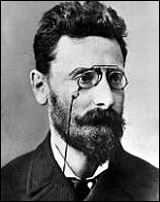 |
Joseph Pulitzer
(April 10, 1847 – October 29, 1911) was a Hungarian-American newspaper
publisher of the St. Louis Post Dispatch and the New York World. In
1864 he emigrated from Hungary to the United States. Pulitzer, a
journalist, editor and pioneer of modern journalism, founded the
Pulitzer Prize. The prizes originally endowed with a gift of $500,000
from Joseph Pulitzer, are highly esteemed and have been awarded since
1917. He organized a donation drive for the erection of the base of the
Statue of Liberty in New York. The fund he started covers the expenses
for the statue’s lighting even today.
|
 |
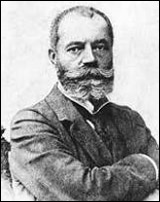 |
Tivadar Puskás
(Sept 17, 1844 – March 16, 1893) Hungarian inventor, telephone pioneer
and Thomas Edison's colleague. He was an inventor of the telephone
exchange, Telephonograph (forerunner to radio) and Telephone News.
Puskás was working on his idea for a telegraph exchange when Alexander
Graham Bell co-invented the telephone. This led him to take a fresh
look at his work and he decided to get in touch with the American
inventor Thomas Edison. Puskás now began to concentrate on perfecting
his scheme to build a telephone exchange. According to Edison, "Tivadar
Puskás was the first person to suggest the idea of a telephone
exchange". Puskás's idea finally became a reality in 1877 in Boston.
|
 |
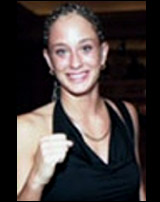 |
Jessica Rakoczy
(April 14, 1977 - ). She is a Boxer - IBA Lightweight World Champion!
Jessica excelled at all sports. As a high school athlete she competed
in hockey, baseball, football, soccer, track and swimming. She was
twice voted her school's athlete of the year. She began working at 13,
and, with trouble at home, moved out at 15 and struggled at school. She
was introduced to boxing at the age of 17. Here too she excelled.
Shortly after starting her training, she fought competitively for the
first time in the Ontario Championships and won the gold medal. She
went pro two years later. She is the 1 ranked boxers in the world in
her weight class.
|
 |
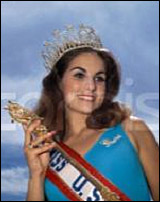 |
Maria Judith Reményi
(born 1946 - ) Remenyi was born in Denmark and grew up in Hungary after
her father was transferred to an army post. Maria and her family left
Hungary in 1956 and settled in El Cerrito, California. Maria won the
Miss USA contest in 1966 and became the second Californian to win the
Miss USA title. In July she competed in the Miss Universe 1966 pageant,
placing in the top fifteen.
|
 |
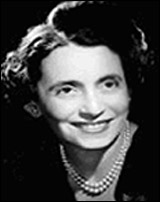 |
Anna M. Rosenberg -
(June 19, 1902 – May 9, 1983). Anna’s accomplishments include holding
distinguished positions in the US government. Anna was
Assistant-Secretary of Defense under the Truman administration and was
a key advisor for President Roosevelt on labor relation issues. Anna
received a Medal of Freedom in 1945 and Medal of Merit in 1947. Anna is
one of the first pioneering women to shatter the glass ceiling. Anna is
a naturalized US citizen having moved from Hungary.
|
 |
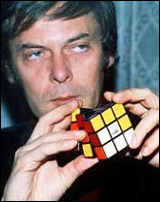 |
Ernő Rubik (July
13, 1944 - ). Ernő is an inventor, architect and professor of
architecture. He is best known for the invention of mechanical puzzles
including Rubik's Cube (1974), Rubik's Magic, Rubik's Magic: Master
Edition, Rubik's Snake and Rubik's 360. Enthusiasts of the cube have
organized clubs, contests and world championships. The Rubik’s Cube has
entered the Museum of Modern Art in New York City. In 1983, he founded
the Rubik Studio in Hungary tailored to furniture and games. In 1987,
Doctor Rubik became professor with full tenure and three years later
became the president of the Hungarian Engineering Academy (Magyar
Mérnöki Akadémia).
|
 |
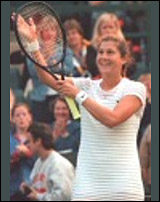 |
Monica Seles
(December 2, 1973 -) She is a former world no. 1 professional tennis
player and a member of the International Tennis Hall of Fame. She was
born in Novi Sad, Serbia, former Yugoslavia to Hungarian parents. She
won the European junior championship at the age of ten. She moved to
the United States in 1986, and in 1989 turned professional. She became
a naturalized United States citizen in 1994 and also received Hungarian
citizenship in June 2007. She won nine Grand Slam singles titles;
winning eight of them while a citizen of Yugoslavia and one while a
citizen of the United States.
|
 |
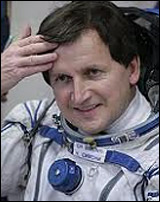 |
Charles Simonyi
(September 10, 1948 - ). Charles is a Hungarian computer software
executive who, as head of Microsoft's application software group,
oversaw the creation of Microsoft's flagship office applications. In
2007, he became the fifth space tourist and the second Hungarian in
space. Father of WYSIWYG (What You See Is What You Get) and Hungarian
Notation. He moved to the United States in 1968. From 1972 to 1980, he
worked at Xerox Corporations Palo Alto Research Center. Charles gained
his American citizenship in 1982.
|
 |
 |
Ignác Fülöp Semmelweis
(July 1, 1818 – August 13, 1865). He was a physician, called by many in
the field of medicine as “the savior of mothers.” Discovered the cause
of puerperal (childbed) fever and introduced antisepsis into medical
practice. Semmelweis discovered that the incidence of puerperal fever
could be drastically cut by the use of hand disinfection in obstetrical
clinics. Puerperal fever was common in mid-19th-century hospitals and
often fatal, with mortality at 10%–35%. Under these procedures, the
mortality rates in the first division dropped from 18.27 to 1.27
percent, and in March and August of 1848 no woman died in childbirth in
his division. Some doctors were offended at the suggestion that they
should wash their hands and Semmelweis could offer no acceptable
scientific explanation for his findings. Semmelweis's practice earned
widespread acceptance only years after his death, when Louis Pasteur
confirmed the germ theory.
|
 |
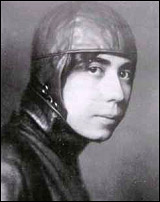 |
Lili Steinschneider
(January 13, 1891 – March 28, 1975). She was the first woman pilot of
Hungary and, at the same time, of the Austria-Hungarian Monarchy. She
decided to become a pilot at the international aviation contest which
took place in Budapest during the summer of 1910. She studied aviation
at Wienerneustadt. She received the Nr. 4 Aviation certificate on
August 15, 1912. She was immediately hired by an Austrian aviation
firm. She took part in various domestic and Austrian aviation contest
and parades. Lili got married in 1914 and moved to her husband's
residence in Czechia (Czech Republic). She lived a secluded life in the
aftermath of Second World War in the South of France.
|
 |
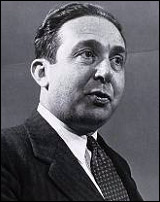 |
Leo Szilárd
(February 11, 1898 – May 30, 1964). Physicist, biologist, co-developed
the Atomic Bomb, patented the nuclear reactor, catalyst of the
Manhattan Project. He was born in Budapest under the Austro-Hungarian
Empire, and died in La Jolla, California. Szilard first realized the
potential use of nuclear fission in an atomic bomb, and worked with
Fermi on the first nuclear reaction. His other ideas included the
electron microscope, cyclotron, and linear accelerator. As an inventor,
he even had numerous joint patents with Einstein. He proposed the term
"breeder" to describe a nuclear reactor and holds a joint 1955 US
patent on the nuclear reactor with Enrico Fermi. In the spring of 1945,
Szilard influenced a group of scientists to produce the Franck Report,
which outlined the dangers of a nuclear arms race. The report advised
against the use of an atomic bomb against Japanese civilians,
advocating instead a non-combat demonstration.
|
 |
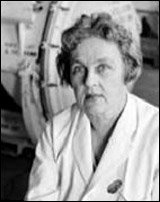 |
Mária Telkes
(December 12, 1900 – December 2, 1996) a Hungarian-American physical
chemist and engineer, she designed the first residential solar heating
system. Developed the first thermoelectric power generator and
thermoelectric refrigerator. A Pioneer of Solar Energy: "Mother of the
Solar Home," The "Sun Queen," and world's most famous woman inventor in
solar energy. Telkes is known for creating the first thermoelectric
power generator in 1947 and the first thermoelectric refrigerator in
1953 using the principles of semiconductor thermoelectricity. She
received the first Achievement award ever given by the Society of Women
Engineers. In 1952 during her tenure at MIT, Maria was for her
meritorious contributions to the utilization of solar energy. In
addition, Dr. Telkes became known as one of the pioneers of solar
energy usage when she received the Charles Greeley Abbot Award.
|
 |
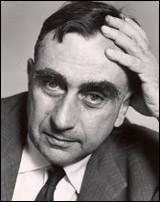 |
Edward Teller
(January 15, 1908 – September 9, 2003). He was a Nuclear physicist and
key scientist in the development of the first atomic and hydrogen
bombs. After attending schools in Budapest, Dr. Teller earned a degree
in chemical engineering at the Institute of Technology in Karlsruhe. He
then went to Munich and Leipzig to earn a Ph.D. in physical chemistry
(1930). In 1935 Teller and his bride, went to the United States, where
he taught at George Washington University in Washington, D.C. Doctor
Teller became a US citizen and joined Enrico Fermi’s team at the
University of Chicago. Teller resolved to devote his energies to
developing nuclear weapons. He was a member of the Manhattan Project
scientific team, and took part in developing the nuclear chain reaction
and the first atomic bomb. Dr. Teller was also known as the father of
the hydrogen bomb (1952. He had an important part in the development of
submarine torpe-does and the formulation of Star Wars (the United
States missile defense system). Teller is strongly anticommunist and
his scientific work regarding nuclear explosives significantly
contributed to the United States’ peaceful victory of the Cold War.
|
 |
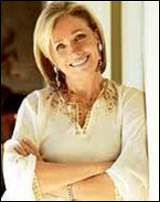 |
Adrienne Vittadini
(b. 1945, Budapest). She is a renowned fashion designer. When Adrienne
was 12, her family fled Budapest during the 1956 Hungarian revolution.
In 1979, she started what would become a multi-million dollar business
as a hobby. The brand name Adrienne Vittadini is synonymous with
designs that have a "Euro-American" point of view. She uses vibrant
colors and prints and she is known for her clothing, handbags,
swimsuits, shoes, and perfumes. Her company was purchased by Retail
Brand Alliance in 2001. Adrienne was also ranked in People Magazine's
50 Most Beautiful People in the World (1992). Her designs are worn by
Kim Basinger, Candice Bergen and Joan Lunden to name a few.
|
 |
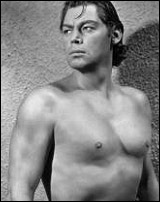 |
Johnny Weissmuller
(June 2, 1904 – January 20, 1984). He was an Austro-Hungarian-born
American swimmer and actor best known for playing Tarzan in movies.
Weissmuller was one of the world's best swimmers in the 1920s, winning
five Olympic gold medals in swimming and one bronze medal in water
polo. He won fifty-two US National Championships and set sixty-seven
world records. After his swimming career, he became the sixth actor to
portray Edgar Rice Burroughs's ape man Tarzan in films, a role he
played in twelve motion pictures. Dozens of other actors have also
played Tarzan, but Weissmuller is by far the best known. His
character's distinctive, ululating Tarzan yell is still often used in
films.
|
 |
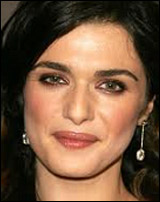 |
Rachel Weisz (March
7, 1971 - ), Actress and Model Film credits include: The Mummy, The
Mummy II, and Enemy at the Gates, Stealing Beauty, Chain Reaction, and
Swept from the Sea, Sunshine, and Beautiful Creatures. Rachel studied
English at Trinity Hall, Cambridge. She formed the Talking Tongues
theater company and at 1991's Edinburgh Festival won a student drama
award for a play she wrote and acted in. Her mother, Edith, is a
Viennese-born psychotherapist (encouraged Rachel to try theatre). Her
father, George, is a Hungarian-born inventor credited with inventing
life-saving respiratory medical equipment.
|
 |
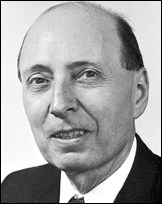 |
Eugene Wigner
(November 17, 1902 – January 1, 1995) was a Hungarian-American
theoretical physicist and mathematician. He received the Nobel Prize in
Physics in 1963 "for his contributions to the theory of the atomic
nucleus and the elementary particles, particularly through the
discovery and application of fundamental symmetry principles"
A graduate of the Technical University of Berlin, Wigner worked as an
assistant to Karl Weissenberg and Richard Becker at the Kaiser Wilhelm
Institute in Berlin, and David Hilbert at the University of Göttingen.
Wigner and Hermann Weyl were responsible for introducing group theory
into physics, particularly the theory of symmetry in physics. Along the
way he performed ground-breaking work in pure mathematics, in which he
authored a number of mathematical theorems. In particular, Wigner's
theorem is a cornerstone in the mathematical formulation of quantum
mechanics. He is also known for his research into the structure of the
atomic nucleus. In 1930, Princeton University recruited Wigner, along
with John von Neumann, and he moved to the United States.
Wigner
participated in a meeting with Leo Szilard and Albert Einstein that
resulted in the Einstein-Szilard letter, which prompted President
Franklin D. Roosevelt to initiate the Manhattan Project to develop
atomic bombs. Wigner was afraid that the German nuclear weapon project
would develop an atomic bomb first. During the Manhattan Project, he
led a team whose task was to design nuclear reactors to convert uranium
into weapons grade plutonium. At the time, reactors existed only on
paper, and no reactor had yet gone critical. Wigner was disappointed
that DuPont was given responsibility for the detailed design of the
reactors, not just their construction. He became Director of Research
and Development at the Clinton Laboratory (now the Oak Ridge National
Laboratory) in early 1946, but became frustrated with bureaucratic
interference by the Atomic Energy Commission, and returned to Princeton.
In
the postwar period he served on a number of government bodies,
including the National Bureau of Standards from 1947 to 1951, the
mathematics panel of the National Research Council from 1951 to 1954,
the physics panel of the National Science Foundation, and the
influential General Advisory Committee of the Atomic Energy Commission
from 1952 to 1957 and again from 1959 to 1964.
In later life, he
became more philosophical, and published The Unreasonable Effectiveness
of Mathematics in the Natural Sciences, his best-known work outside
technical mathematics and physics.
|
 |
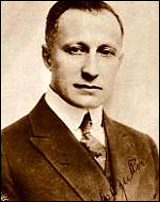 |
Adolph Zukor
(January 7, 1873 – June 10, 1976) - Founder of Paramount Pictures
Empire and Leow's Theatres. He immigrated to the United States at age
16 in 1889. Zukor worked his way up to become a well-heeled Chicago
furrier and, in 1903, teamed with Marcus Loew to open the first of a
series of penny arcades. The business did very well, but soon he moved
on to theatres. In 1914 he produced the first American made feature
film, "The Prisoner of Zenda." Adolph received a special Academy Award
in 1948 for his contributions to the industry.
|
 |
|
 |